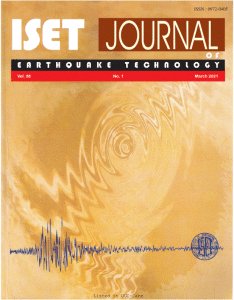Home > Issues & Journals
Attenuation of the peaks of earthquake ground motion along the himalayan orogenic belt
I.D. Gupta and M.D. Trifunac
Paper No.: 580
|
Vol.: 60
|
No.: 3
|
September, 2023
|
pp. 75-99

Abstract
Empirical prediction relationships have been developed for the peak accelerations, velocities and
Displacements for five different combinations of earthquake sources and the regions of recording along
Himalayan orogenic belt with widely differing source-to-site path attenuation characteristics. Due to a
Limited number of strong motion records available, a specially devised regression analysis has been
Carried out to develop these relationships. The predicted values have been shown to be in good agreement with the recorded data and to be physically realistic on seismological grounds and other independent measurements like stress drop and Q-parameter. These prediction models specific to local earthquakes recorded in the Northwest Himalayan (NWH) region, the Northeast India (NEI) region and the National Capital Region (NCR) of India, and the distant earthquakes in the Indo-Burmese subduction (IBS) and Hindu Kush Subduction (HKS) zones recorded in the NEI and NWH regions, respectively, will provide a basis for hazard mapping of several different quantities of interest in these regions derived from one or more of the peaks of the earthquake ground motion.
Keywords: Peaks of ground motion along the Himalayan orogenic belt; Peak strains in the ground Caused by earthquake waves; Correction of response spectra for differential ground motion
©2025. ISET. All Rights Reserved.